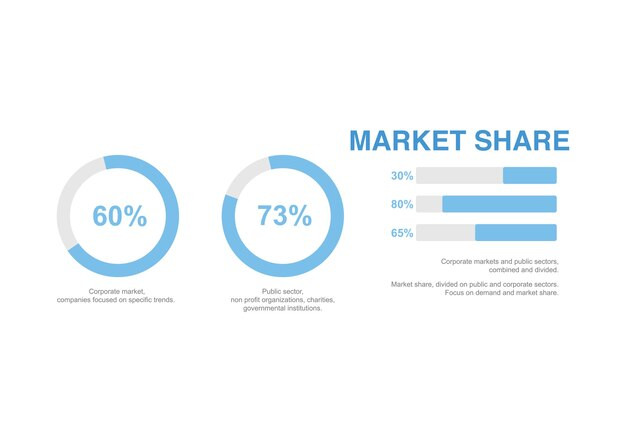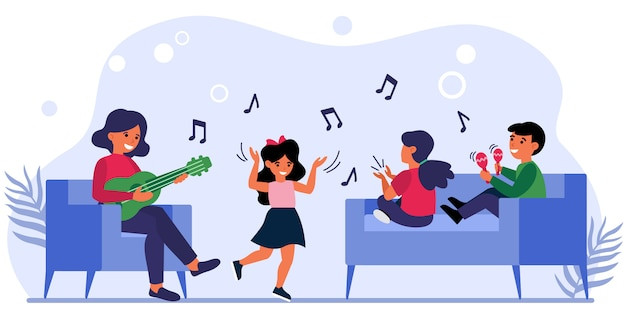CRM tourism is a customer-centric approach that personalizes travel experiences. SIXT.VN can help you understand what CRM tourism is all about. It enhances customer relationships and boosts business growth by using data-driven strategies. Ready to learn how to create unforgettable journeys for your clients? Let’s dive into CRM tourism!
1. What is CRM Tourism and Why is it Important?
CRM tourism leverages Customer Relationship Management to enhance travel experiences. It is an industry-specific application of CRM strategies designed to improve customer satisfaction, retention, and overall business growth within the tourism sector. According to a study by Hospitality Technology, businesses using CRM systems see a 47% improvement in customer satisfaction and a 39% boost in repeat business, which are critical for the tourism industry.
1.1. Defining CRM Tourism
CRM tourism is a strategic approach that uses technology to manage and analyze customer interactions and data throughout the customer lifecycle. The goal is to improve business relationships with customers, assist in customer retention, and drive sales growth. It involves collecting, analyzing, and applying customer data to personalize services, offers, and communications, ultimately aiming to create memorable and satisfying travel experiences.
1.2. Why CRM is Essential for the Tourism Industry
In the highly competitive tourism industry, providing exceptional customer experiences is crucial. CRM tourism enables businesses to:
- Personalize Services: Tailor travel packages, offers, and communications based on individual customer preferences and past experiences.
- Enhance Customer Loyalty: Build stronger relationships with customers by providing personalized support and addressing their specific needs.
- Streamline Operations: Improve efficiency in booking processes, customer service, and marketing campaigns.
- Increase Revenue: Drive repeat business and attract new customers through targeted marketing and personalized offers.
- Gain Competitive Advantage: Stand out from competitors by delivering superior customer experiences and building a loyal customer base.
1.3. Key Components of a CRM System for Tourism
A robust CRM system for tourism includes several key components:
- Customer Data Management: Centralized storage and management of customer information, including contact details, travel preferences, booking history, and interactions.
- Booking and Reservation Management: Streamlined processes for managing bookings, reservations, and itineraries.
- Marketing Automation: Tools for creating and automating marketing campaigns, including email marketing, social media marketing, and targeted advertising.
- Customer Service and Support: Features for managing customer inquiries, complaints, and feedback, ensuring timely and effective resolutions.
- Analytics and Reporting: Comprehensive analytics and reporting tools for tracking customer behavior, measuring campaign performance, and identifying opportunities for improvement.
- Mobile Accessibility: The ability to access and manage customer data and CRM functions on mobile devices, enabling on-the-go customer service and support.
1.4. Benefits of Implementing CRM in Tourism
Implementing CRM in tourism offers numerous benefits that contribute to business growth and customer satisfaction:
- Improved Customer Satisfaction: Personalized services and support lead to higher customer satisfaction and loyalty.
- Increased Customer Retention: Tailored offers and proactive communication encourage repeat business.
- Enhanced Marketing Effectiveness: Targeted marketing campaigns based on customer data yield better results.
- Streamlined Operations: Automated processes reduce manual tasks and improve efficiency.
- Better Data Analysis: Comprehensive analytics provide valuable insights into customer behavior and market trends.
- Competitive Advantage: Superior customer experiences differentiate your business from competitors.
2. Identifying Your Target Audience in the Tourism Sector
To effectively implement CRM in tourism, it’s essential to identify and understand your target audience. According to research by Phocuswright, understanding customer demographics and preferences is critical for tailoring travel experiences and marketing efforts. This involves segmenting your audience based on various factors and creating detailed customer profiles.
2.1. Segmenting Your Audience
Segmenting your audience involves dividing your customer base into groups based on shared characteristics. Common segmentation factors include:
- Demographics: Age, gender, income, education, and occupation.
- Geographics: Location, travel patterns, and preferred destinations.
- Psychographics: Lifestyle, interests, values, and attitudes.
- Behavioral: Purchase history, booking patterns, and engagement with marketing campaigns.
2.2. Creating Customer Personas
Customer personas are fictional representations of your ideal customers based on research and data. Each persona should include details such as:
- Name and Photo: Giving your persona a name and photo makes them more relatable.
- Demographics: Age, gender, location, and occupation.
- Background: Education, family status, and career history.
- Goals and Motivations: What they want to achieve through travel.
- Pain Points: Challenges they face when planning and booking travel.
- Travel Preferences: Types of destinations, activities, and accommodations they prefer.
2.3. Tailoring Services to Meet Specific Needs
Once you have identified your target audience and created customer personas, you can tailor your services to meet their specific needs:
- Customized Travel Packages: Design travel packages that cater to the interests and preferences of different customer segments.
- Personalized Recommendations: Offer recommendations for destinations, activities, and accommodations based on individual customer profiles.
- Targeted Marketing Campaigns: Create marketing campaigns that resonate with specific customer segments, using messaging and channels that appeal to them.
- Loyalty Programs: Develop loyalty programs that reward repeat customers and encourage them to book with your company again.
2.4. Understanding Customer Behavior and Preferences
Understanding customer behavior and preferences is crucial for personalizing travel experiences. This involves:
- Analyzing Booking Data: Examining booking patterns to identify popular destinations, travel dates, and booking channels.
- Tracking Customer Interactions: Monitoring customer interactions across all touchpoints, including website visits, social media engagement, and customer service inquiries.
- Gathering Feedback: Soliciting feedback from customers through surveys, reviews, and social media.
- Using Analytics Tools: Utilizing analytics tools to track key metrics such as customer satisfaction, retention rate, and campaign performance.
 Travel personas: Representing different customer segments in tourism.
Travel personas: Representing different customer segments in tourism.
3. Optimizing Marketing Strategies with CRM Data
CRM data can be used to optimize marketing strategies and improve campaign effectiveness. According to a report by McKinsey & Company, data-driven marketing is 5-8 times more efficient than traditional marketing methods. By leveraging customer data, you can create more targeted and personalized marketing campaigns that resonate with your audience.
3.1. Creating Targeted Marketing Campaigns
Targeted marketing campaigns involve delivering personalized messages to specific customer segments based on their interests and preferences. This can be achieved through:
- Email Marketing: Sending personalized email campaigns with tailored offers, recommendations, and travel tips.
- Social Media Marketing: Creating social media content that resonates with specific customer segments and using targeted advertising to reach them.
- Content Marketing: Developing blog posts, articles, and videos that address the needs and interests of different customer segments.
- Search Engine Optimization (SEO): Optimizing your website and content for search engines to attract customers who are actively searching for travel information.
3.2. Personalizing Email Marketing
Email marketing is a powerful tool for engaging with customers and driving bookings. To personalize email marketing campaigns:
- Segment Your Email List: Divide your email list into segments based on demographics, travel preferences, and booking history.
- Use Personalized Subject Lines: Craft subject lines that grab attention and encourage recipients to open the email.
- Include Personalized Content: Use customer data to personalize the content of your emails, including offers, recommendations, and travel tips.
- Automate Email Campaigns: Set up automated email campaigns to nurture leads, welcome new customers, and follow up after bookings.
3.3. Utilizing Social Media for Targeted Advertising
Social media platforms offer powerful targeting capabilities that allow you to reach specific customer segments with your advertising. To utilize social media for targeted advertising:
- Identify Your Target Audience: Determine the demographics, interests, and behaviors of your target audience.
- Create Engaging Ads: Design ads that capture attention and resonate with your target audience.
- Use Targeted Advertising Options: Utilize the targeting options offered by social media platforms to reach your desired audience.
- Track Campaign Performance: Monitor the performance of your social media campaigns to optimize your strategy and improve results.
3.4. Leveraging Customer Data for Content Marketing
Content marketing involves creating and distributing valuable, relevant, and consistent content to attract and engage your target audience. To leverage customer data for content marketing:
- Identify Customer Pain Points: Determine the challenges and questions that your customers face when planning and booking travel.
- Create Content That Addresses These Pain Points: Develop blog posts, articles, and videos that provide solutions and answers to these questions.
- Personalize Content Based on Customer Preferences: Tailor your content to the interests and preferences of different customer segments.
- Promote Your Content Through Multiple Channels: Share your content through social media, email marketing, and your website.
 Personalized email marketing: Targeted travel offers and recommendations.
Personalized email marketing: Targeted travel offers and recommendations.
4. Enhancing Customer Service Through CRM
CRM can significantly enhance customer service by providing agents with a 360-degree view of the customer, enabling them to provide personalized and efficient support. According to a study by Accenture, 83% of customers are more loyal to brands that provide excellent customer service. By leveraging CRM, you can improve customer satisfaction and build stronger relationships.
4.1. Providing Personalized Support
Personalized support involves tailoring your customer service interactions to meet the specific needs of each customer. This can be achieved through:
- Knowing Your Customers: Accessing customer data to understand their past interactions, preferences, and booking history.
- Using Personalized Greetings: Addressing customers by name and using personalized greetings in your interactions.
- Offering Tailored Solutions: Providing solutions that are tailored to the specific needs and preferences of each customer.
- Following Up After Interactions: Following up with customers after interactions to ensure they are satisfied with the resolution.
4.2. Streamlining Communication Channels
Streamlining communication channels involves consolidating all customer interactions into a single platform, making it easier for agents to access and manage customer inquiries. This can be achieved through:
- Integrating Multiple Channels: Integrating email, phone, chat, and social media into a single CRM system.
- Using a Unified Inbox: Providing agents with a unified inbox that allows them to view and respond to inquiries from all channels.
- Automating Routine Tasks: Automating routine tasks such as ticket creation, assignment, and escalation.
- Providing Self-Service Options: Offering self-service options such as FAQs, knowledge bases, and chatbots to empower customers to resolve their own issues.
4.3. Using Chatbots for Instant Support
Chatbots are AI-powered virtual assistants that can provide instant support to customers 24/7. They can be used to:
- Answer Frequently Asked Questions: Provide quick answers to common customer inquiries.
- Guide Customers Through Processes: Walk customers through booking processes, troubleshooting steps, and other common tasks.
- Collect Customer Data: Gather customer data to personalize interactions and improve customer service.
- Escalate Complex Issues: Escalate complex issues to human agents for further assistance.
4.4. Collecting and Analyzing Customer Feedback
Collecting and analyzing customer feedback is crucial for identifying areas where you can improve your customer service. This can be achieved through:
- Surveys: Sending out surveys to customers after interactions to gather feedback on their experience.
- Reviews: Monitoring online reviews and social media mentions to identify customer sentiment.
- Feedback Forms: Providing feedback forms on your website and in your communications.
- Analyzing Feedback Data: Analyzing feedback data to identify trends, patterns, and areas for improvement.
 Customer service chatbot: Providing instant support to travel clients.
Customer service chatbot: Providing instant support to travel clients.
5. Automating Processes for Efficiency in Tourism CRM
Automating processes in tourism CRM can significantly improve efficiency and reduce manual tasks, allowing your team to focus on more strategic activities. According to a report by Forrester, businesses that automate their processes see a 20% increase in productivity. By automating key processes, you can streamline operations and improve customer satisfaction.
5.1. Automating Booking and Reservation Management
Automating booking and reservation management involves using CRM to streamline the process of managing bookings, reservations, and itineraries. This can be achieved through:
- Online Booking Systems: Implementing online booking systems that allow customers to book and manage their reservations online.
- Automated Confirmation Emails: Sending automated confirmation emails to customers after they make a booking.
- Automated Reminders: Sending automated reminders to customers before their travel dates.
- Integration with Travel Agencies: Integrating your CRM with travel agencies to streamline the booking process.
5.2. Automating Follow-Up Communications
Automating follow-up communications involves using CRM to send automated emails and messages to customers after they make a booking or interact with your company. This can be used to:
- Welcome New Customers: Send a welcome email to new customers after they make their first booking.
- Thank Customers for Their Business: Send a thank you email to customers after they complete their travel.
- Solicit Feedback: Send a survey to customers after their travel to gather feedback on their experience.
- Promote Special Offers: Send promotional emails to customers with special offers and discounts.
5.3. Automating Lead Nurturing
Automating lead nurturing involves using CRM to send targeted emails and messages to potential customers to guide them through the sales funnel. This can be used to:
- Identify Potential Customers: Identify potential customers who have shown interest in your company.
- Send Targeted Emails: Send targeted emails to potential customers with relevant information and offers.
- Track Engagement: Track engagement with your emails and messages to identify which leads are most likely to convert.
- Personalize Interactions: Personalize your interactions with potential customers based on their interests and preferences.
5.4. Automating Reporting and Analytics
Automating reporting and analytics involves using CRM to generate automated reports and dashboards that provide insights into your business performance. This can be used to:
- Track Key Metrics: Track key metrics such as customer satisfaction, retention rate, and campaign performance.
- Identify Trends: Identify trends and patterns in your data to make informed decisions.
- Measure Campaign Effectiveness: Measure the effectiveness of your marketing campaigns to optimize your strategy.
- Share Insights: Share insights with your team to improve collaboration and decision-making.
 Automated booking confirmation: Streamlining travel reservations.
Automated booking confirmation: Streamlining travel reservations.
6. Integrating CRM with Other Tourism Technologies
Integrating CRM with other tourism technologies can enhance efficiency and provide a seamless experience for both customers and employees. According to a report by Statista, the integration of CRM with other business systems can increase revenue by up to 25%. By integrating your CRM with other technologies, you can streamline operations and improve customer satisfaction.
6.1. Integrating with Booking Platforms
Integrating your CRM with booking platforms such as Booking.com and Expedia can streamline the booking process and provide a seamless experience for customers. This can be achieved through:
- Real-Time Data Synchronization: Synchronizing data in real-time between your CRM and booking platforms.
- Automated Booking Updates: Automatically updating customer data in your CRM when a booking is made on a booking platform.
- Personalized Offers: Providing personalized offers to customers based on their booking history and preferences.
- Streamlined Communication: Streamlining communication with customers through automated emails and messages.
6.2. Integrating with Social Media Platforms
Integrating your CRM with social media platforms such as Facebook and Twitter can provide valuable insights into customer behavior and preferences. This can be achieved through:
- Social Listening: Monitoring social media mentions of your company and brand.
- Social Engagement: Engaging with customers on social media to build relationships and provide support.
- Social Advertising: Using social media advertising to reach targeted customer segments.
- Data Integration: Integrating social media data with customer data in your CRM.
6.3. Integrating with Email Marketing Tools
Integrating your CRM with email marketing tools such as Mailchimp and HubSpot can streamline your email marketing campaigns and improve their effectiveness. This can be achieved through:
- Data Synchronization: Synchronizing customer data between your CRM and email marketing tools.
- Automated Email Campaigns: Creating automated email campaigns based on customer data and behavior.
- Personalized Emails: Sending personalized emails to customers with targeted offers and recommendations.
- Tracking Email Performance: Tracking the performance of your email campaigns to optimize your strategy.
6.4. Integrating with Analytics Platforms
Integrating your CRM with analytics platforms such as Google Analytics and Adobe Analytics can provide valuable insights into your business performance. This can be achieved through:
- Data Synchronization: Synchronizing customer data between your CRM and analytics platforms.
- Tracking Key Metrics: Tracking key metrics such as website traffic, conversion rates, and customer satisfaction.
- Identifying Trends: Identifying trends and patterns in your data to make informed decisions.
- Measuring Campaign Effectiveness: Measuring the effectiveness of your marketing campaigns to optimize your strategy.
 CRM integration with social media: Engaging with customers on social platforms.
CRM integration with social media: Engaging with customers on social platforms.
7. Training and Support for Tourism CRM Implementation
Proper training and support are crucial for the successful implementation and adoption of tourism CRM. According to a study by Gartner, organizations that provide comprehensive training and support see a 40% increase in CRM adoption rates. By investing in training and support, you can ensure that your team is able to effectively use the CRM and achieve your business goals.
7.1. Providing Comprehensive Training
Comprehensive training involves providing your team with the knowledge and skills they need to effectively use the CRM. This can be achieved through:
- Onboarding Training: Providing new employees with onboarding training that covers the basics of the CRM.
- Advanced Training: Providing advanced training to employees who need to use more complex features of the CRM.
- Ongoing Training: Providing ongoing training to employees to keep them up-to-date with the latest features and best practices.
- Hands-On Training: Providing hands-on training that allows employees to practice using the CRM in a real-world environment.
7.2. Offering Ongoing Support
Ongoing support involves providing your team with the resources and assistance they need to effectively use the CRM. This can be achieved through:
- Help Desk: Providing a help desk that employees can contact with questions and issues.
- Knowledge Base: Creating a knowledge base with articles and tutorials that employees can use to learn about the CRM.
- Live Chat: Providing live chat support that allows employees to get instant assistance with their questions.
- User Community: Creating a user community where employees can connect with each other and share tips and best practices.
7.3. Creating a CRM Champion
Creating a CRM champion involves identifying an employee who is passionate about the CRM and can serve as a resource for other employees. The CRM champion can:
- Provide Training and Support: Provide training and support to other employees.
- Promote CRM Adoption: Promote CRM adoption throughout the organization.
- Gather Feedback: Gather feedback from employees and share it with the CRM vendor.
- Identify Best Practices: Identify best practices for using the CRM and share them with other employees.
7.4. Measuring Training Effectiveness
Measuring training effectiveness involves tracking the results of your training programs to ensure that they are achieving their goals. This can be achieved through:
- Surveys: Sending out surveys to employees after training to gather feedback on their experience.
- Quizzes: Administering quizzes to employees to assess their knowledge of the CRM.
- Performance Metrics: Tracking performance metrics such as CRM adoption rates and customer satisfaction.
- Analyzing Results: Analyzing the results of your training programs to identify areas for improvement.
 CRM training session: Equipping teams for success in tourism CRM.
CRM training session: Equipping teams for success in tourism CRM.
8. Measuring the Success of CRM Tourism Strategies
Measuring the success of CRM tourism strategies is essential for determining whether your efforts are paying off. According to a report by HubSpot, businesses that track their CRM metrics see a 20% increase in sales. By tracking key metrics, you can identify areas where you are succeeding and areas where you need to improve.
8.1. Tracking Key Performance Indicators (KPIs)
Tracking KPIs involves monitoring key metrics that indicate the success of your CRM tourism strategies. Some common KPIs include:
- Customer Satisfaction: Measuring customer satisfaction through surveys, reviews, and feedback.
- Customer Retention: Tracking the percentage of customers who return to book with your company again.
- Customer Acquisition Cost: Measuring the cost of acquiring a new customer.
- Return on Investment (ROI): Measuring the return on investment for your CRM tourism strategies.
- Sales Growth: Tracking the growth of your sales over time.
- Conversion Rates: Measuring the percentage of leads who convert into customers.
8.2. Using Analytics Tools to Monitor Progress
Using analytics tools such as Google Analytics and Adobe Analytics can provide valuable insights into your business performance. These tools can be used to:
- Track Website Traffic: Monitoring the traffic to your website to see how customers are finding you.
- Analyze Customer Behavior: Analyzing customer behavior to see how they are interacting with your website and booking process.
- Measure Campaign Effectiveness: Measuring the effectiveness of your marketing campaigns to see which ones are generating the most leads and sales.
- Identify Trends: Identifying trends and patterns in your data to make informed decisions.
8.3. Analyzing Customer Feedback to Identify Areas for Improvement
Analyzing customer feedback is crucial for identifying areas where you can improve your CRM tourism strategies. This can be achieved through:
- Surveys: Sending out surveys to customers after interactions to gather feedback on their experience.
- Reviews: Monitoring online reviews and social media mentions to identify customer sentiment.
- Feedback Forms: Providing feedback forms on your website and in your communications.
- Analyzing Feedback Data: Analyzing feedback data to identify trends, patterns, and areas for improvement.
8.4. Regularly Reviewing and Adjusting Strategies
Regularly reviewing and adjusting your CRM tourism strategies is essential for ensuring that they remain effective over time. This involves:
- Monitoring KPIs: Regularly monitoring your KPIs to track your progress.
- Analyzing Data: Analyzing your data to identify trends and patterns.
- Gathering Feedback: Gathering feedback from customers and employees.
- Making Adjustments: Making adjustments to your strategies based on your findings.
 Customer feedback analysis: Identifying areas for CRM tourism strategy improvement.
Customer feedback analysis: Identifying areas for CRM tourism strategy improvement.
9. Future Trends in CRM for the Tourism Industry
The future of CRM in the tourism industry is expected to be shaped by several key trends. According to a report by Deloitte, these trends include the increasing use of AI, the growing importance of personalization, and the rise of mobile CRM.
9.1. The Increasing Use of Artificial Intelligence (AI)
AI is expected to play an increasingly important role in CRM for the tourism industry. AI can be used to:
- Personalize Customer Experiences: Use AI to analyze customer data and provide personalized recommendations and offers.
- Automate Customer Service: Use AI-powered chatbots to provide instant support to customers 24/7.
- Predict Customer Behavior: Use AI to predict customer behavior and identify potential leads.
- Improve Marketing Effectiveness: Use AI to optimize marketing campaigns and improve their effectiveness.
9.2. The Growing Importance of Personalization
Personalization is becoming increasingly important in the tourism industry. Customers expect to be treated as individuals and to receive personalized offers and recommendations. CRM can be used to:
- Gather Customer Data: Gather customer data to understand their preferences and interests.
- Segment Customers: Segment customers into groups based on their characteristics and behaviors.
- Create Personalized Offers: Create personalized offers that are tailored to the needs of each customer.
- Deliver Personalized Experiences: Deliver personalized experiences throughout the customer journey.
9.3. The Rise of Mobile CRM
Mobile CRM is becoming increasingly important as more customers use mobile devices to plan and book travel. Mobile CRM allows you to:
- Access Customer Data on the Go: Access customer data from anywhere with a mobile device.
- Provide On-the-Go Support: Provide support to customers who are on the go.
- Manage Bookings and Reservations: Manage bookings and reservations from your mobile device.
- Track Customer Interactions: Track customer interactions on mobile devices.
9.4. The Integration of IoT (Internet of Things)
The integration of IoT is an emerging trend in the tourism industry. IoT devices can be used to:
- Track Customer Location: Track customer location to provide personalized offers and recommendations.
- Monitor Customer Behavior: Monitor customer behavior to understand their preferences and interests.
- Improve Operational Efficiency: Improve operational efficiency by automating tasks and processes.
- Enhance Customer Safety: Enhance customer safety by monitoring their health and well-being.
 AI-powered chatbots in tourism: Enhancing customer experiences.
AI-powered chatbots in tourism: Enhancing customer experiences.
10. CRM Tourism in Vietnam: A Practical Guide with SIXT.VN
Applying CRM Tourism strategies in Vietnam can significantly enhance the travel experience for tourists. Here’s a practical guide on how to implement these strategies, with a focus on how SIXT.VN can assist in each step.
10.1. Understanding the Vietnamese Tourist Landscape
- Diverse Tourist Base: Vietnam attracts a wide range of tourists, including solo travelers, families, couples, and business travelers.
- Popular Destinations: Key destinations include Hanoi, Ho Chi Minh City, Ha Long Bay, and Hoi An, each offering unique cultural and scenic experiences.
- Seasonal Trends: Tourism fluctuates with peak seasons in the winter (November to April) and summer (June to August), influenced by weather and holidays.
10.2. Implementing CRM Strategies with SIXT.VN
SIXT.VN offers a range of services that can be integrated into a CRM system to enhance the tourist experience:
- Personalized Travel Packages:
- Data Collection: Use CRM to gather data on tourist preferences, such as interests, budget, and travel style.
- Customization: SIXT.VN can create custom tour packages based on this data, offering unique experiences tailored to individual needs.
- Airport Transfer Services:
- Seamless Integration: Integrate SIXT.VN’s airport transfer service into the CRM system to automatically schedule pickups based on flight arrival times.
- Personalized Communication: Send automated welcome messages and updates about the transfer service via the CRM.
- Hotel Booking Assistance:
- Preference Matching: Use CRM data to recommend hotels that match tourist preferences, such as location, price range, and amenities.
- Exclusive Deals: Offer exclusive hotel deals through SIXT.VN, personalized based on customer loyalty and booking history.
- Tour and Activity Recommendations:
- AI-Powered Recommendations: Leverage AI to suggest tours and activities that align with tourist interests, booking history, and real-time trends.
- Easy Booking: Integrate SIXT.VN’s tour booking platform with the CRM, allowing tourists to easily book activities with personalized recommendations.
- Customer Feedback System:
- Automated Surveys: Implement automated feedback surveys post-tour to gather insights on customer satisfaction and areas for improvement.
- Real-Time Adjustments: Use feedback to make real-time adjustments to services and offerings, ensuring continuous enhancement of the tourist experience.
10.3. Step-by-Step Guide to Setting Up CRM with SIXT.VN
- Data Collection and Integration:
- CRM Setup: Choose a CRM system that supports integration with third-party services like SIXT.VN.
- Data Import: Import existing customer data into the CRM, including contact details, booking history, and preferences.
- API Integration: Use APIs to connect SIXT.VN’s services with the CRM, enabling seamless data flow and automated processes.
- Personalization and Customization:
- Customer Segmentation: Segment tourists based on demographics, interests, and travel behavior.
- Content Creation: Develop personalized email templates, tour recommendations, and promotional offers tailored to each segment.
- Automated Messaging: Set up automated messaging sequences for different stages of the tourist journey, from pre-arrival to post-departure.
- Service Implementation with SIXT.VN:
- Airport Transfer Integration: Link flight arrival data to SIXT.VN’s transfer service for automated scheduling and personalized pickup experiences.
- Hotel and Tour Recommendations: Use CRM insights to suggest relevant hotels and tours through SIXT.VN, offering a curated selection based on tourist preferences.
- Feedback Collection: Automate feedback collection post-tour to gather insights on service quality and satisfaction.
- Monitoring and Optimization:
- Performance Tracking: Track key performance indicators (KPIs) such as customer satisfaction, repeat bookings, and service usage.
- Data Analysis: Analyze CRM data to identify trends, patterns, and areas for improvement.
- Continuous Enhancement: Use insights to refine CRM strategies, personalize offerings, and enhance the overall tourist experience.
10.4. Example Scenario: Family Vacation to Hanoi
- Initial Contact: A family from the USA plans a vacation to Hanoi and contacts SIXT.VN for assistance.
- CRM Integration: The family’s preferences (e.g., cultural sites, family-friendly activities, accommodation preferences) are entered into the CRM.
- Personalized Itinerary:
- SIXT.VN creates a customized itinerary including:
- Airport transfer with a private car.
- Hotel booking at a family-friendly hotel near Hoan Kiem Lake.
- Guided tour of the Temple of Literature and Ho Chi Minh Mausoleum.
- Traditional water puppet show.
- Automated reminders and updates are sent via the CRM to keep the family informed.
- SIXT.VN creates a customized itinerary including:
- Post-Tour Feedback: After the vacation, an automated survey is sent to gather feedback, ensuring continuous improvement of services.
10.5. Benefits of Using SIXT.VN in CRM Tourism
- Enhanced Personalization: Tailor travel experiences based on individual tourist preferences, ensuring a memorable and satisfying trip.
- Efficient Service Delivery: Streamline operations and automate key processes, such as airport transfers and hotel bookings, reducing manual effort and improving service quality.
- Improved Customer Satisfaction: Provide personalized support and real-time assistance, enhancing customer satisfaction and loyalty.
- Data-Driven Insights: Leverage CRM data to gain insights into tourist behavior, enabling targeted marketing and service enhancements.
- Increased Revenue: Drive repeat bookings and attract new customers through personalized offers and exclusive deals, boosting overall revenue.
FAQ About CRM Tourism
What is the main goal of CRM in the tourism industry?
The main goal is to enhance customer relationships by personalizing travel experiences, improving satisfaction, and driving repeat business through data-driven strategies.
How does CRM help personalize travel experiences?
CRM collects and analyzes customer data to tailor services, offers, and communications, ensuring that each customer receives a unique and satisfying travel experience.
What are the key components of a CRM system for tourism?
Key components include customer data management, booking and reservation management, marketing automation, customer service and support, analytics and reporting, and mobile accessibility.
How can targeted marketing campaigns be created using CRM data?
By segmenting your audience based on demographics, travel preferences, and booking history, you can create personalized email and social media campaigns that resonate with specific customer segments.
What role do chatbots play in CRM for tourism?
Chatbots provide instant support to customers 24/7 by answering frequently asked questions, guiding customers through processes, collecting customer data, and escalating complex issues to human agents.
How can processes be automated for efficiency in tourism CRM?
Automating booking and reservation management, follow-up communications, lead nurturing, and reporting and analytics can significantly improve efficiency and reduce manual tasks.
Why is integrating CRM with other tourism technologies important?
Integration with booking platforms, social media platforms, email marketing tools, and analytics platforms streamlines operations and provides a seamless experience for both customers and employees.
How can training and support ensure successful CRM implementation?
Comprehensive training and ongoing support equip your team with the knowledge and skills they need to effectively use the CRM and achieve your business goals.
What are the key performance indicators (KPIs) to track in CRM tourism?
Common KPIs include customer satisfaction, customer retention, customer acquisition cost, return on investment (ROI), sales growth, and conversion rates.



